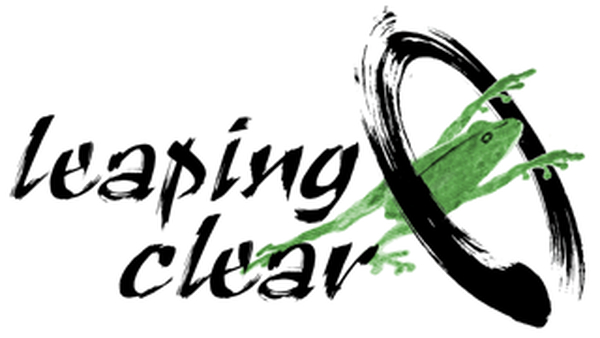Elizabeth Leah Reed
In Isolation Together
We begin as always. My teacher’s voice echoes in my head as I say to my class “Compose yourselves.”
I look at my students look at me. Not at my back with my face and theirs reflected by a wall of mirrors. Not in a ballet studio with its polished wood floor. They see my face, the fireplace behind me, the tile floor of my living room.
We used to meet together once a week to practice the ancient Chinese arts of tai chi and qi gong. Between times we went through the moves in the solitude of our homes. Now is the year of Covid-19. We live isolated from each other. Every day is without connection with others.
But our computers and phones and tablets bring us together. My students appear on my screen boxed into little squares with varied mise en scènes. Some virtual, some real. A kitchen sink here. A window there. A field of violets. A mountain rising high. Palm tree fronds gently mimic our movements. A dog barks. “Please mute yourselves.”
“Let us begin.”
Zhan Zhuang—standing and forgetting. Centering. Strengthening.
I talk them through their bodies.
“Hang from the golden thread, chin tucked in, bring your mind to the tan tien, loosen hips, unflex calves, root your feet, connect to ground.
“Soften. Relax. Breathe.”
As we stand silently in wuji, we seek a place of emptiness. Of meditation. Of mindfulness. We sense relationship with the heavens and the earth. Stasis. Nothing appears to happen on the inside or on the outside. We are present. Present in the moment.
“And now flow from wuji to tai chi. Wuji always precedes tai chi.”
We practice together the same movements we’ve done for years. Some for a few, some for forty. Like the ebb and flow of gentle waves, we roll from one posture into another—roll back, press, push. From our separate locations we connect over space and time—single whip, crane cools wings, carry tiger to mountain. We move and turn in our cramped squares in unison with each other and then part for another week.
Since the advent of pandemic affected our mobility and exposure to others, affected our freedom to come and go at will, the need to communicate is more urgent and real. While old ways like picking up a telephone or texting on a smart phone continue, new ways of being together emerge. Methods many knew little of, or never dared try before, suddenly became the everyday. Who knew it would be so easy to Zoom to get together. Book clubs. Religious services. Family gatherings. Exercise classes. Business groups. Interest groups. Meditation practices.
Twice a week I’m in class, one I give, one I take. Several mornings I join with more than one hundred tai chi players from around the world to practice a round of tai chi together. Singapore, Taiwan, Holland, England, Scotland, Spain, France and most every state of the US. We all know the same form. Familiar faces and names appear—some I haven’t seen in twenty years. A “hello” here, a “be well” there, sometimes a conversation. Many say “thank you” as they sign off. But most important, during that time of togetherness we share our common language, tai chi. We bathe in the one qi, the energy we create together through our movements and our stillness. We sense it though we are far apart.
My mind wanders to memory. A real class in a real room long ago. I entered that evening and began as usual “Compose yourselves.” None of my students knew of the death in my family that day. Stand and forget. Quiet standing. Move through the form. Leading that class that night provided a brief escape from reality. A restorative hour of being with others. Today, when I return to tai chi and practice with others through my computer, it restores me as well.
A solace and relief, this coming together in harmony over the internet. To stand in stillness and empty the mind. To relax. Breathe. Begin again the familiar movements of the tai chi form. Meditation in motion. A solitary practice has a different quality and effect that also soothes. But today I join with others before my computer. Isolated but together. Moving with one qi. Centered. Connected. Calm.
Strengthened to return once again to what is.
Elizabeth Leah Reed
Tai chi found Elizabeth Leah Reed one breezy day in Annapolis, Maryland, almost forty years ago. This practice of meditation in motion has subtly changed her through the years. Its simplicity and ever deeper levels of connection fascinate her. Tai chi led her to qi gong and the philosophy of Taoism which informs her life. In the 1990s, her teacher asked her to teach. She continues to share this ancient discipline with her students.
Elizabeth’s nonfiction essays include “From Appomattox to Alturas” (Journal of Modoc County Historical Society, No. 40, 2018), “At Mrs. Musterman’s Hat Shop” and “Saturdays in Lansdowne” (Oasis Journal, 2018, ed. Leila Joiner, Imago Press), and “Daoism—A Primer on Harmony” (Taijiquan Journal, Vol. 5 No 4 Fall 2004). Her book, We Come from Island People (Peter’s Row Publishing, 2000), details five families of Virginia from 1645 to 1900. She is completing a biography to be published in fall 2020. After earning her BA degree cum laude from the University of Maryland, she became an award-winning corporate and content writer and teacher. She visits Annapolis, her former hometown, annually, leaving the heat of her desert residence in Tucson, Arizona, where she writes, birds, and practices tai chi.
More on Elizabeth Leah Reed’s work can be found on our Links page.

